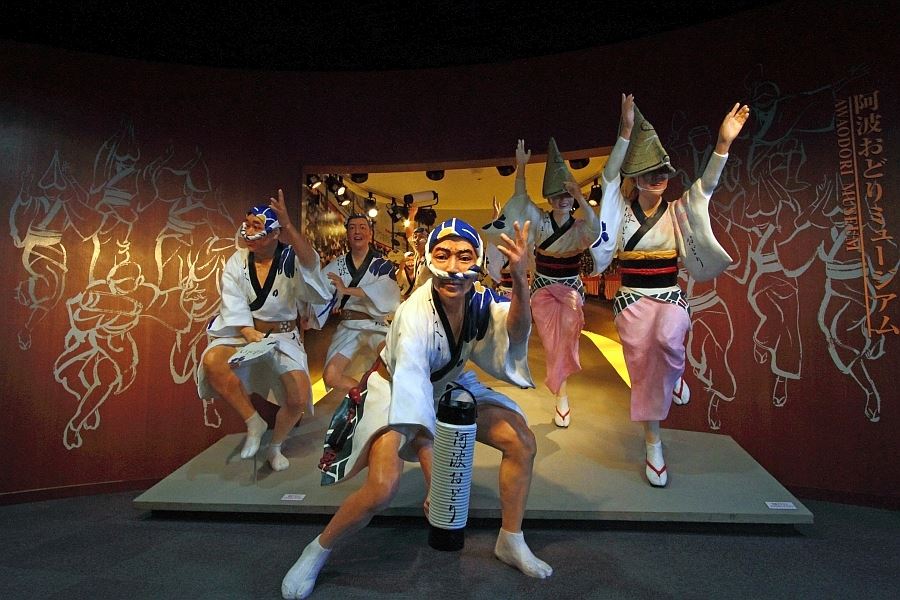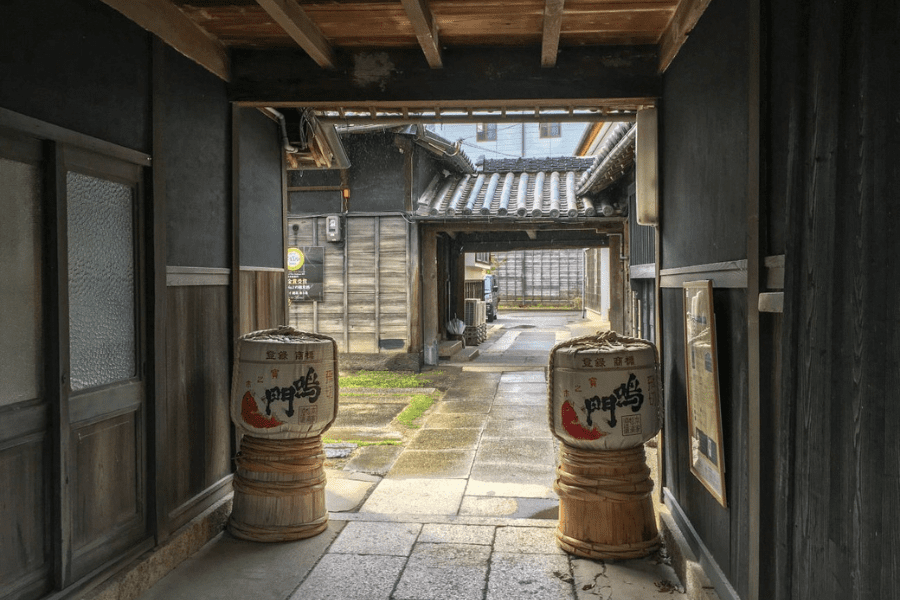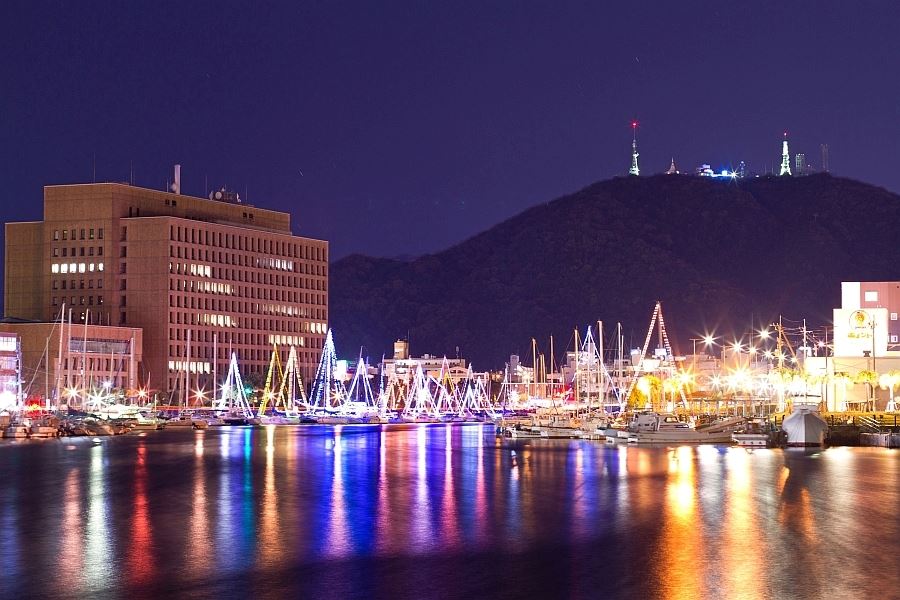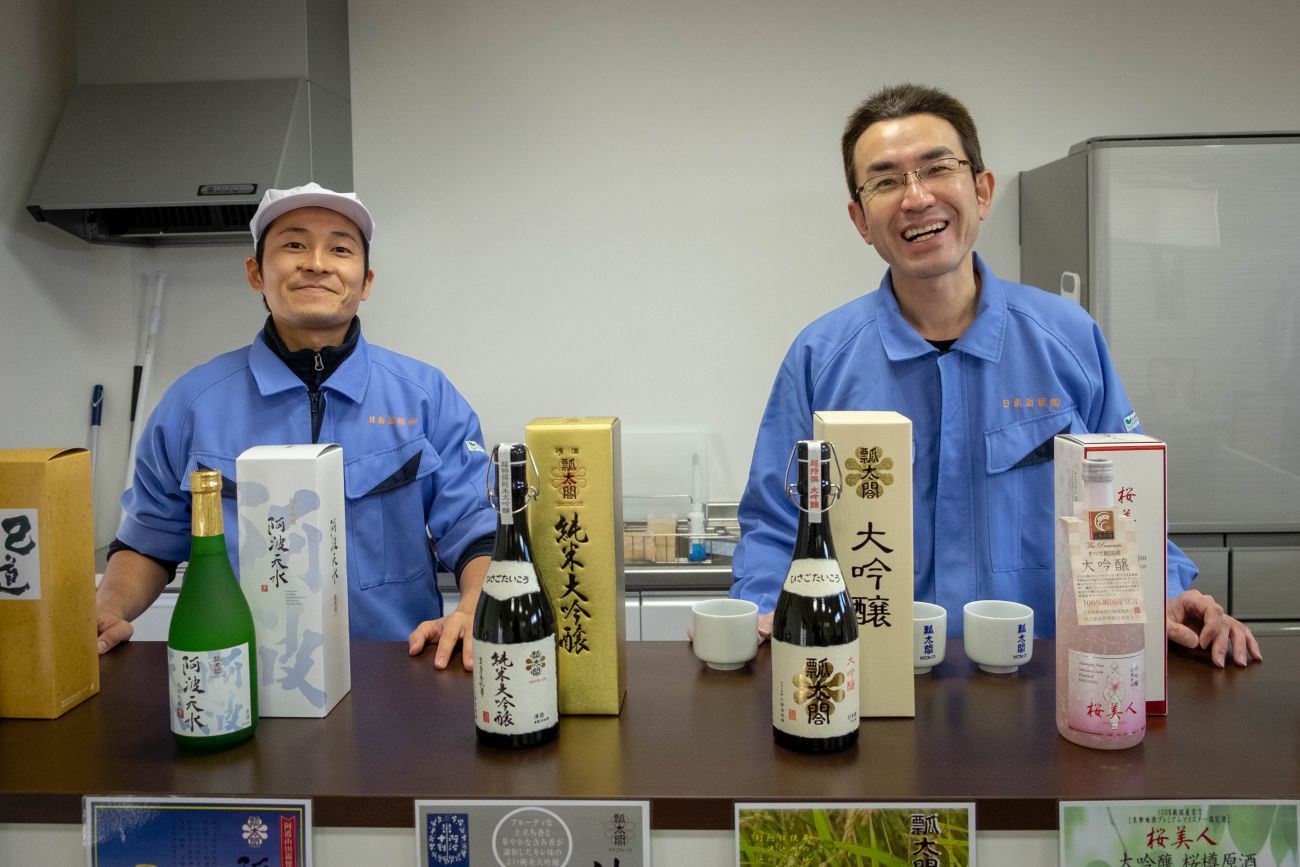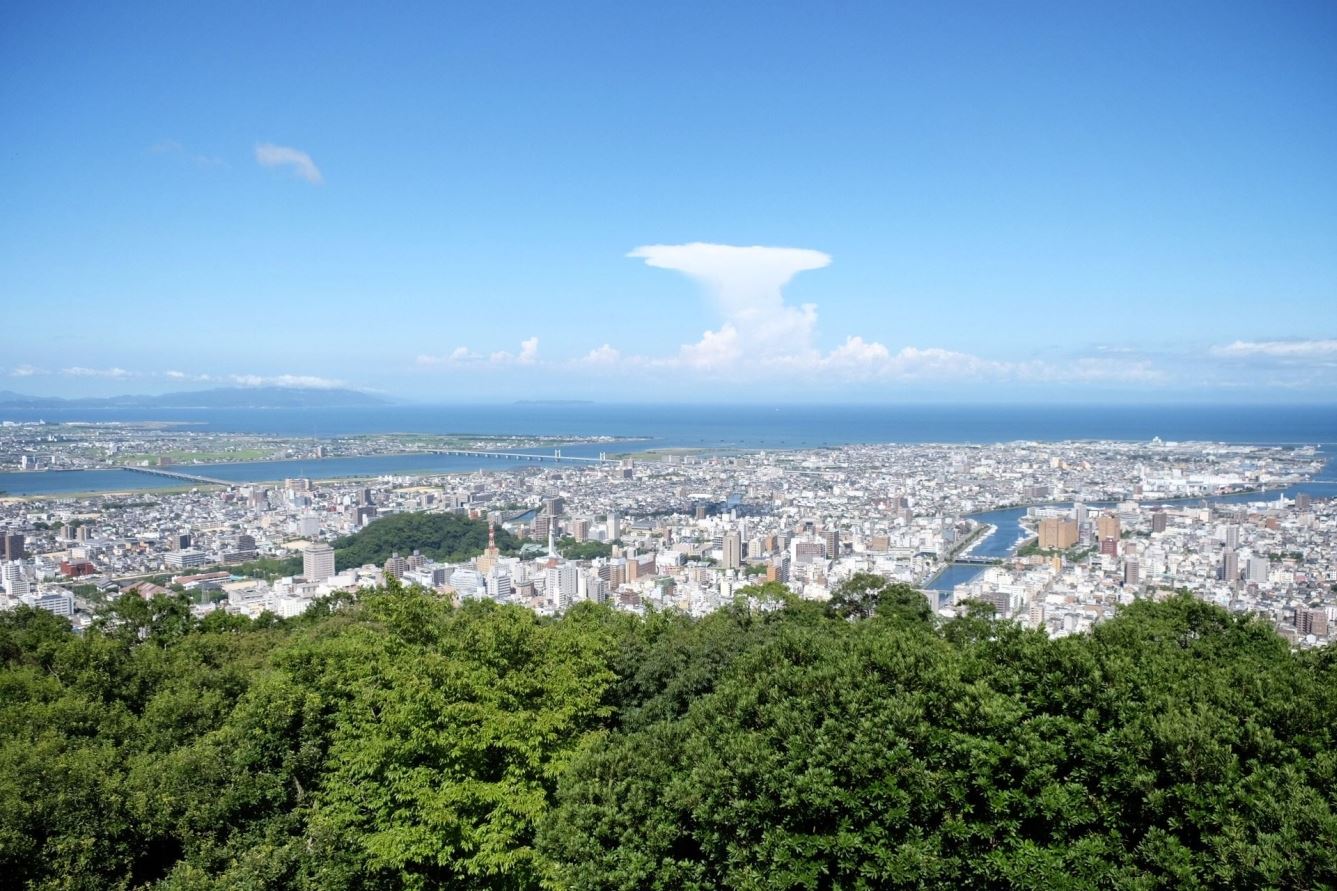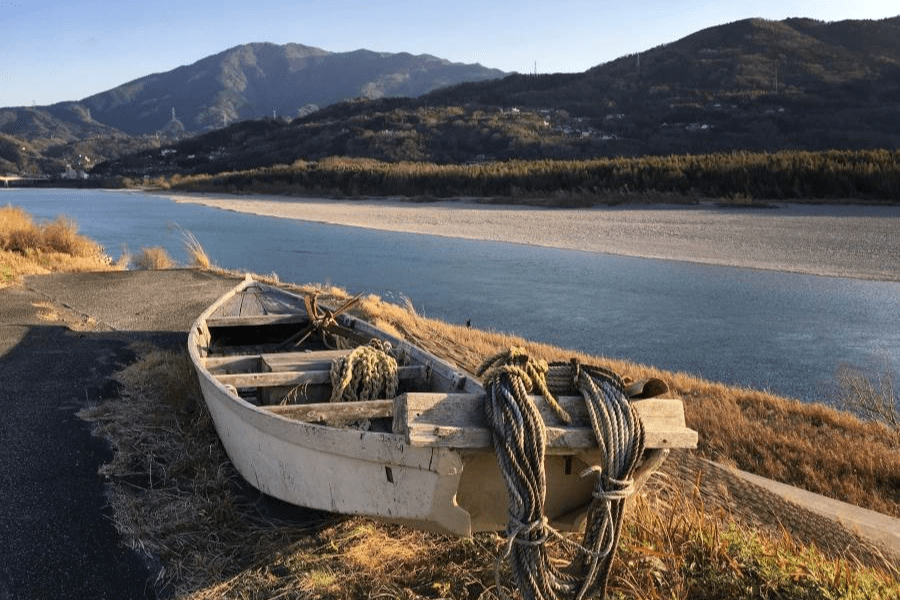Saito Brewery Co., Ltd.
Home » Saito Brewery Co., Ltd.
Saito Brewery Co., Ltd.
Saitō Shuzōjō is a sake brewer in the middle of Tokushima city. Their Gotensakura brand suggests a cherry tree blossoming in the grounds of a palace.
The brewery is a beautiful but inconspicuous building sitting next to a major road. It looks just like a small liquor shop, with bottles of nihonshu and fruit liqueurs on shelves and some sake-related objets. But when you pass through the curtain beyond the counter, you find yourself in a building with unsuspected depths.
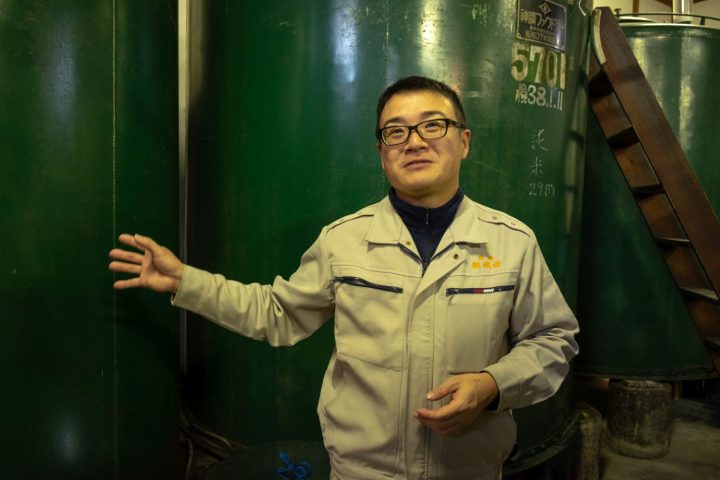
Shikoku Sake visited the brewery in February when the brewery was making its ginjō sake, taking advantage of the coldest time of year. We spoke to Saitō Tomohiko, president of the company and one of the brewing team. He welcomed us wearing a smart workman’s suit and white wellies, and took us through the curtain and into the depths of the brewery.
Interview
With the quiet poise and precision of a time-tested engineer, Saitō-san gave us the low-down on a very tight operation.
When was the brewery established?
“We started business in 1939 when my grandfather bought the brewery from another brewer who gave up brewing. The shop building itself is about five hundred years old, but the brewing building is relatively new. It’s about fifty years old.”
How many people are on the brewing team?
“There are three of us, me, my father, and my younger brother. Either I or my father are in charge of brewing quality. We manage everything using clipboards!”
Shikoku Sake has visited breweries all over Japan and Shikoku, but three is the smallest team we’ve encountered so far.
What rice do you use?
“We use nearly 100% Tokushima-grown rice. For daiginjō we use Yamadanishiki, and for junmai we Gin no Sato. Our rice is grown in Mima, west of here.”
What is your water source?
“We have a well that goes down thirty metres, and we pump water up from there. Just a short distance from here there’s a river called the Akuigawa, and underground water from there flows into our well.”
What yeast do you use?
“We use Tokushima LED Yume Kōbo. It has a good aroma and powerful fermentation. It’s perfect for brewing ginjō. It’s only used by brewers in Tokushima.”
What is the defining character of your sake?
“From old times, we’ve been making smooth, clean sake with a gentle mouthfeel. Our junmai and honjōzō are good drunk warm. We brew our sake to go well with Japanese food.
We also brew doboroku (rustic sake that goes to market without pressing – it’s basically unprocessed sake mash). You need to have a special license to brew it. You also need a separate license to make liqueur.”
The doboroku is sold in the fairly large “One Cup” jars that those of an alcoholic disposition favour. I note that it takes a certain courage to purchase and drink that much unprocessed sake in one sitting. Saitō-san chuckles in agreement.
What is the defining character of Tokushima sake?
“Tokushima Prefecture as a whole? I think it’s probably a little on the sweet side.”
Which countries are you currently exporting your sake to?
“We export to Shanghai in China, Australia, and occasionally Hong Kong. The broker from Shanghai suddenly turned up here asking if he could handle our sake. I wasn’t sure if he was trustworthy, but he’s been selling our sake for five years now, and all is well. JETRO and the Prefecture have introduced us to importers in Australia.”
What are your thoughts about overseas drinkers of your sake?
“We welcome visitors who’d like to visit our brewery. An appointment is necessary. None of us speaks English, but if foreign visitors come, I’ll be glad to show them around with gestures and things. Each region of Shikoku has its own style of sake, and I think that visitors will enjoy discovering these different tastes for themselves. Many of the brewers in Shikoku are keen to welcome overseas visitors.”
Is there a particular product that you’d like overseas drinkers to try?
“In Tokushima, a special, high-grade sugar is grown called wasanbon, that’s made into sugar cakes that are served with tea. Our umeshu plum liqueur contains the molasses extracted in the production of this sugar, and it imparts a unique flavour to the liqueur. The plums are grown in Kamiyama in Tokushima.”
The tasting afterwards certainly confirmed this. The umeshu won the gold award at the London Sake Challenge.
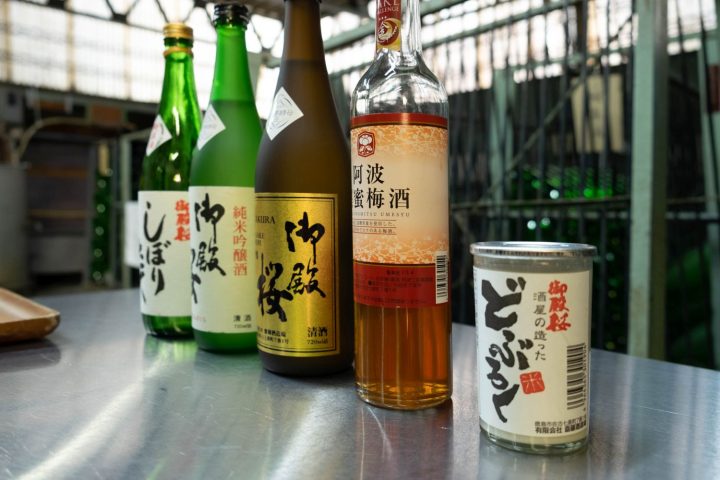
Is there a restaurant near here where people can drink your sake?
“Sometimes Sakaneko in Tokushima buy our sake, and Tarō Saketen near there also stock it. There are quite a lot of izakaya that offer it. Arata in front of Tokushima Station is a bit more of an upmarket restaurant where you can drink it.”
Do any of your staff speak a foreign language?
Laughs. “No!.”
Brewery visit
While his father moves around quietly performing one task or another, Saitō-san explains the workings of the brewery. The buildings are old, and the equipment also has the patina of age and use. Since there are only three people working, some tasks like cooling the rice use machines, but for the higher grade ginjō, everything is done by hand to ensure quality.
In the brewing area itself, there are rows of tanks in the high-ceilinged warehouse. Saitō-san invites me to climb a ladder to peer into a tank of junmai daiginjō mash from which emerges a delightful green apple aroma. It’s been brewing for five days. Another tank is making an audible bubbling sound and the aroma brings a smile to everyone’s faces. Many of the tanks are unused – with the growing popularity of ginjō and unpasteurised nihonshu, the sake is matured in bottles at an offsite refrigerated facility.
We watch the older Saitō-san filling bags with mash and laying them tidily in the fune press. This is the only press of its kind we’ve seen that incorporates a big, rustic log. Even before the lid of the press is lowered, sake is dribbling out of the bags and into a collecting tank. It takes two to three days to press one batch.
In the bottling area, a table is set up for a tasting. The first junmai daiginjō is fruity at the start with quite a dry finish. The junmai ginjō elicits whispers of “Gosh, this is good!”. The sake is only lightly filtered, so it has quite a yellow colour, indicating many flavoursome elements.
In the shop there are some large brown ceramic jars with Japanese characters on them. Saitō-san explains that in the days before bottles were cheap to make, customers would have their own jars, which they’d bring to have filled up at the brewery. The writing on the jars are their names or addresses.
Information
Name in Japanese: 齋藤酒造場
Pronunciation: saitō shuzōjō
Address: 7-1 Sako 7 bancho, Tokushima, 770-0027
Opening hours: 8:00-20:00
Website: http://gotensakura.com
Related Tours

Experience the most beautiful and interesting temples of the Shikoku Pilgrimage in seven days.

A tour for families or friends, staying in the most characterful kominka and ryokan of Shikoku.

Visit the most beautiful and interesting temples of the Shikoku Pilgrimage and walk the toughest trails.

